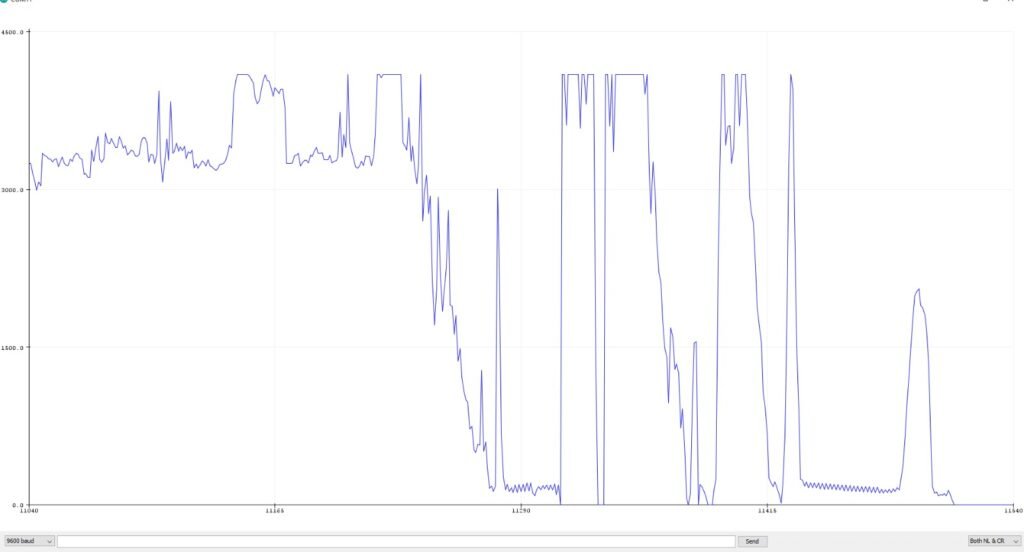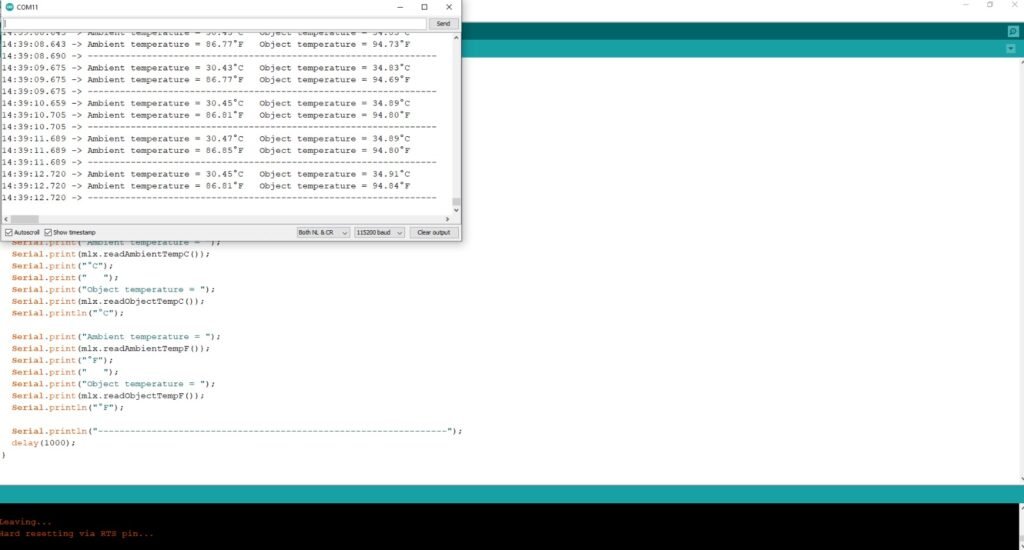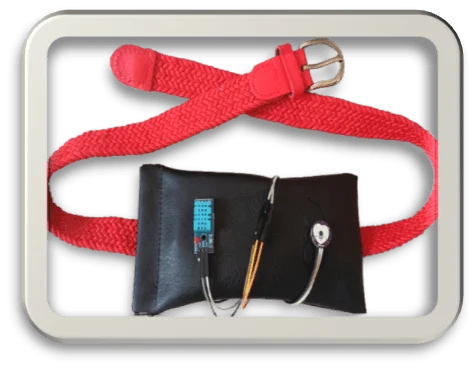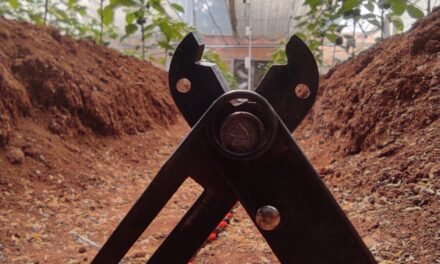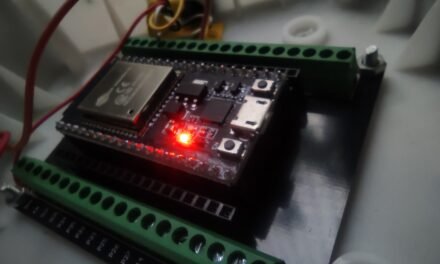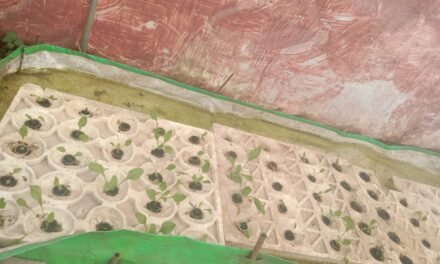Introduction
Ensuring the health and safety of farm animals such as cows, buffaloes, and sheep is a critical priority worldwide. Early detection of diseases and continuous health monitoring can drastically improve animal welfare, reduce disease spread, and enhance productivity. This project focuses on developing an innovative wearable health monitoring band designed to provide real-time insights into crucial health parameters like heart rate and body temperature, all consolidated into a single device. This technology aims to empower farmers with timely data to manage their livestock more efficiently and affordably.
Objectives
The main objectives of this project are:
- To enable continuous and real-time health monitoring of animals through a wearable device.
- To provide actionable health data to farmers for early disease detection and timely treatment.
- To create an affordable, low-cost device that can be widely used, especially by small-scale farmers.
- To facilitate efficient cattle management and reduce the overuse or misuse of medications.
Need of the Project
Animal health monitoring is crucial because delayed detection of diseases in livestock can lead to severe economic losses and the spread of contagious diseases. Traditional methods often result in late diagnosis, leading to ineffective treatment and overuse of medication, which further exacerbates health risks for the animals and the environment.
There is a pressing need for a continuous and real-time monitoring system that can alert farmers early about health issues. Such a system can improve animal welfare by enabling timely intervention, reducing the spread of diseases, and minimizing the excessive or inappropriate use of drugs. Moreover, current sophisticated monitoring solutions are often expensive and not accessible to small-scale farmers.
This project provides a cost-effective, wearable device that monitors vital parameters like heart rate and body temperature and transmits data wirelessly to mobile devices. This innovation not only promises affordable health management but also supports sustainable and efficient cattle farming practices.
References
- National Dairy Development Board (NDDB). Animal Health Services. Retrieved from https://www.nddb.coop/services/animalhealth
- Best Practices for Cattle Disease Surveillance. Discover Texas Real Food. Retrieved from https://discover.texasrealfood.com/raising-cattle/best-practices-for-cattle-disease-surveillance
- National Dairy Development Board (NDDB). Information Network for Animal Productivity and Health (INAPH). Retrieved from https://www.nddb.coop/node/1838
Background Story
I first worked on this project during my college days. I saw that farmers often face problems detecting diseases in their animals early, which can cause serious health issues. So, I thought of making a wearable health band that can measure important things like heart rate and temperature in real-time.
I used sensors and a small controller to build a basic device and tested it on a few animals. It worked well enough to show the idea was good, but I knew it could be improved. That’s why I want to continue working on it here at Vigyan Ashram, where I can make it more reliable, affordable, and easy for farmers to use.
Getting feedback from vets and farmers was encouraging, and it made me confident that this project can really help improve animal health management.




Work on the setup

When I started working on this project here at Vigyan Ashram, I teamed up with Shreyas from FabLab. Our first step was to research which sensors would be best for measuring animal health parameters. After checking various references on the internet, we shortlisted the MLX90614 temperature sensor and a pulse sensor for heart rate measurement.
We then set up the hardware with these sensors and programmed them to collect data. After completing the setup, the system began successfully showing temperature readings and pulse rate (BPM range) values.
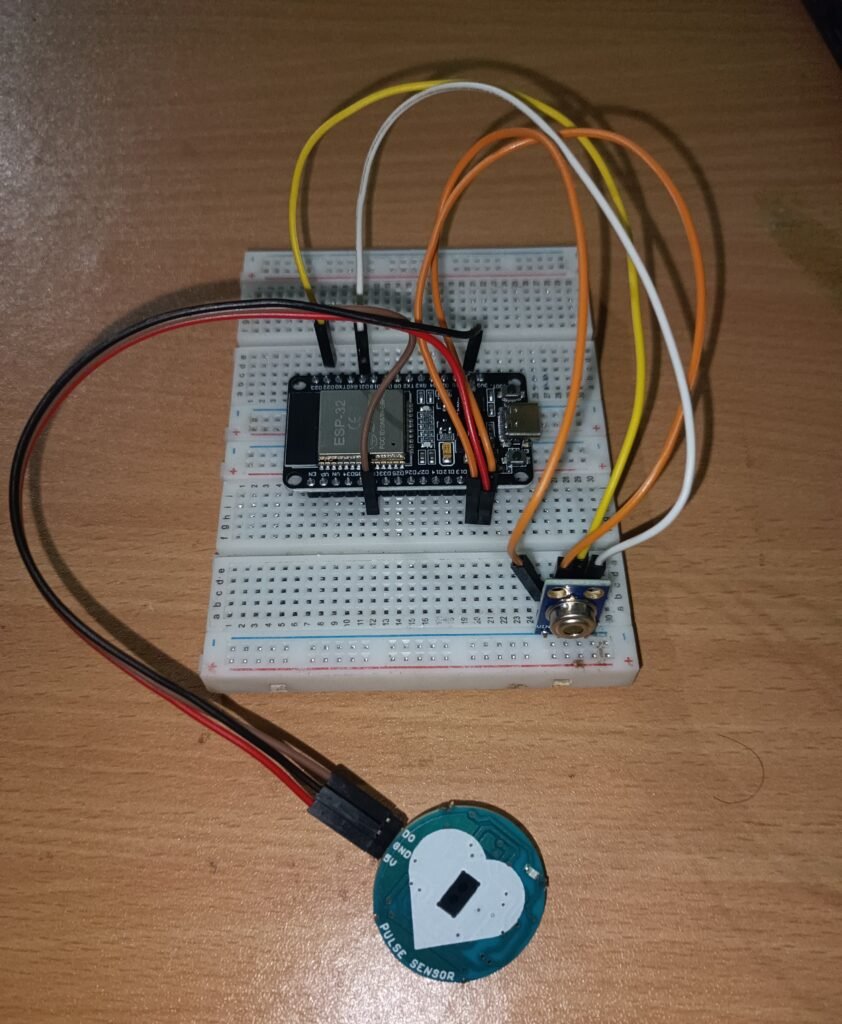
Field Visit with e-Yantra: Listening to Dairy Farmer 22/09/2025 & 23/09/2025
Last week, I visited a Murrah buffalo farm with other e-Yantra competition participants. While talking with the farmer, I learned that he checks his animals at least three times a day, mainly to see if any buffalo is sick or coming into heat. Detecting heat is important for breeding, and it usually happens three times per cycle, so someone always has to be there to watch.
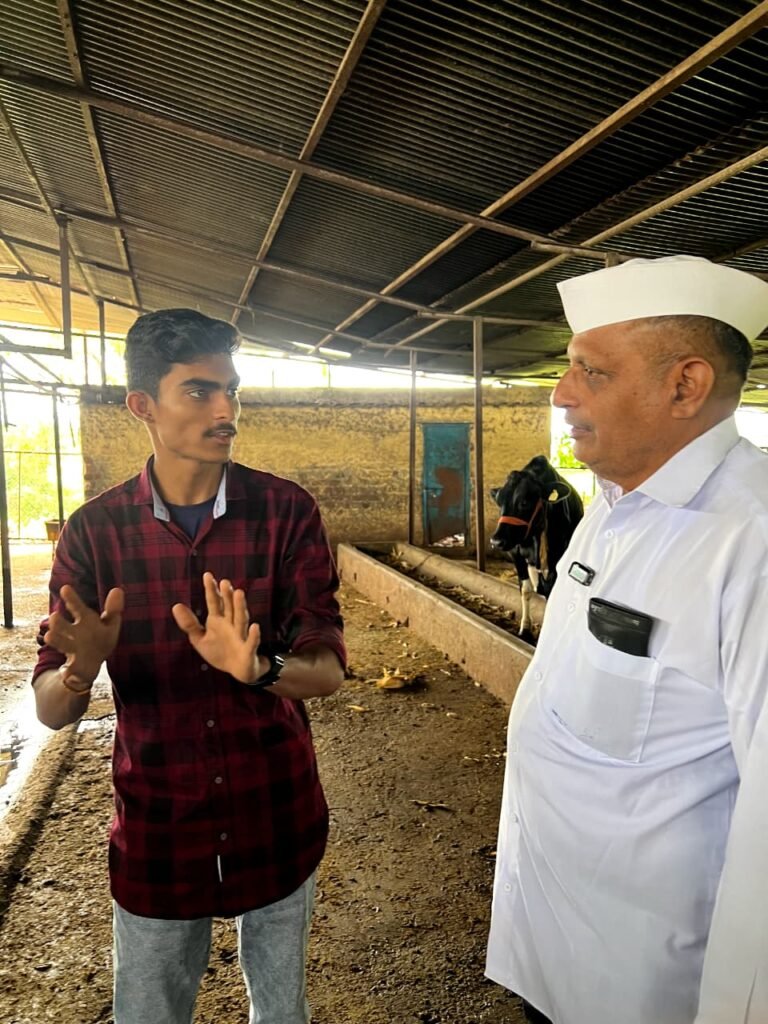
Hearing this made me realize how useful our health band project could be. If our band sends an alert when a buffalo is on heat, the farmer won’t have to keep checking all the time. Plus, it can provide real-time updates about each animal’s health right on their phone. This could save time, reduce effort, and help the farmer take better care of the herd.
After refining the code with shreyas we came up with the clear values of the temperature and heart rate (bpm) values
